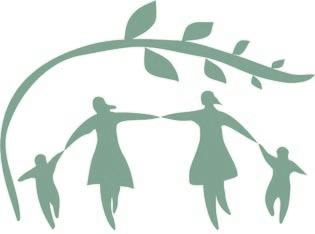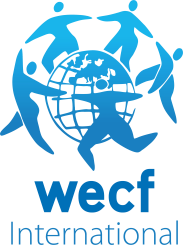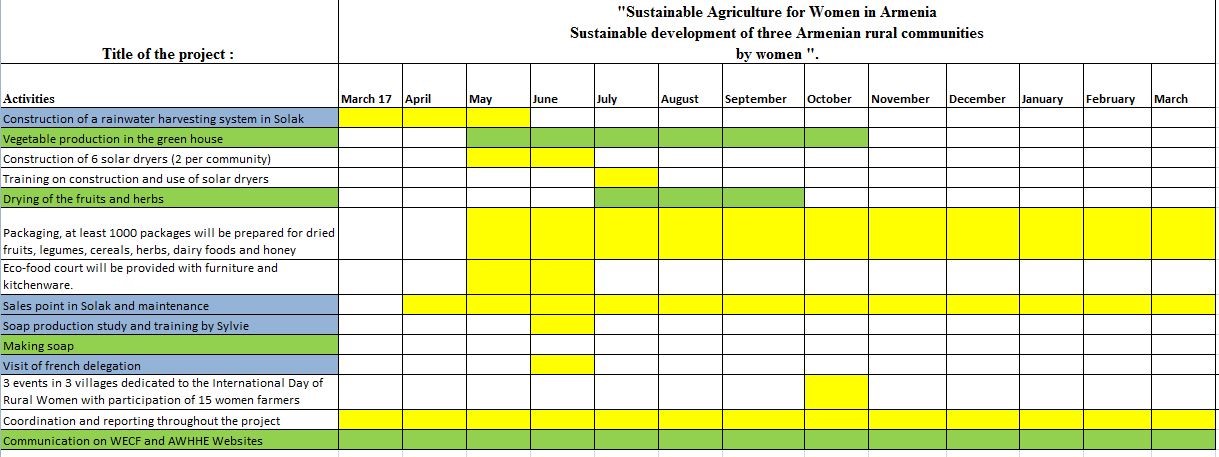2017 – Sustainable Agriculture for Women in Armenia: Sustainable development of three Armenian rural communities by women
According to the Partnership Agreement between the NGO “Armenian Women for Health and Environment” (AWHHE) and Women Engage for a Common Future (WECF – France), the project entitled “Sustainable Agriculture for Women in Armenia: Sustainable Development of Three Armenian Rural Communities by Women” was successfully implemented.
Below are reported the activities in accordance with the log frame.
Construction of a rainwater harvesting system in Solak village
According to the planned activities Action 1 (Diversification of activities) of the Agreement, the construction of a rainwater harvesting system has started to be designed since the beginning of spring and the actual construction started in the end of May.
Site mapping, calculations and the design were done to set the system. The snow collectors and gutters with watercollecting tubes were installed (about 180 mm length) on the roof of the small house (Figures 1, 2). The metalic water pipes were connected to the plastic pipes, which were connected to one pipe leading to the tanks (Figures 3). Between the pipe and a tank a system was constructed to collect the large particles contained in the melted snow (possible leaves, any dirt) and prevent the entrance of the large particles into the tank.
Two metalic water tanks of 5000 litres capacity (length = 560 cm and ø = 102 cm) were installed at the depth of 150 cm in the ground and were covered with about 50 cm of soil (Figures 4, 5). The water tank has round cut profile and is hydroisolated with isogam materials to prevent corosion. Two tanks are communicative vessels. Each of the tank has ø 50 cm entrance (for cleaning works) and water outlets and inlets. There is a pump (Figure 6) to transport the collected water to the greenhouse through the pipe (ø 32 mm, length 300 mm), which was intalled at the depth of about 80 cm to prevent from freezing in winter. The pipe is connected to the plastic water tanks inside the greenhouse, from where the water can be used to irrigate the plants with a drip irrigation system. The pipes with the drippers were installed earlier to save water as soon as possible.
Few more preparation and renovation works
- Kitchen renovation
The kitchen renovation was planned to have more comfortable corner for simple production procedures such as fruit drying, cooking and also organizing hospitality for guests and torists (which will be done in the following steps of the project). The frig and oven were installed inside the furniture (Figure 7), which was ordered for this room.
- Landscape renovation
The territory was cleaned and renovated. Weed control and landcape design were implemented, also the butique was painted and decorated with ornamental (Figure 8) drawing. Border stones and flower pots were renovated and painted as well.
- Preparation for a training on soap production
Few preparation works were done for soap production. The recipe for the planned training activity (Agreement, action 1) was presented by Sylvie Dalibard in order to purchase all neccesary ingredients and materials from the local market for local soap production.
- Development and maintenance of the point of sale
Locally produced agricultural products were labeled and packaged to have modern and trustworthy appearance for the customers of different tastes.
- Cultivation of certain vegetables
Few kinds of vegetables and greens (Figure 9) were cultivated to have a nice view of possible fresh assortment of greens and vegetables which can be used not only for their own consumption, but also to be used by guests and tourists. The assortment included pepper (Capsicum annum), tomato (Lycopersicum esculentum), broccoli (Brassica oleracea), red radish (Raphanus raphanistrum subsp. Sativus), basil (Ocimum basilicum), lettuce (Lactuca sativa), pepper cress (Lepidium sativum) and etc.
Visit of French delegation (June 20-23) to Armenia and training on soap production
In the frame of the joint project the delegation from France visited Armenia in accordance with the schedule (appendix 3) of activities (agreement, action 1 and 3) preliminarily agreed upon with AWHHE NGO. The delegation was comprised of representatives from
two regions of France: Patrick Bedague, the Mayor of Saint-Omer community, Claudette, a farmer, Nicolas Rochas, an urban engineer from Hauts-de France region, and Florence Rosset, the Director of WECF – France and Sylvie Dalibard, a soap producer and farmer from the Rhône-Alpes region. The visit of the group from Hauts-de France region aimed at studying the possibilities for future cooperation with AWHHE NGO. The goal of the visit of WECF-France delegation was to participate in the official opening of the rainwater collecting system constructed in the village of Solak (Kotayk province) and to teach women farmers how to produce soap using local resources. And the general goal of the whole mission was to identify the main issues of the development of cooperation between Armenian and France in order to bring social, economic and environmental development in the target communities. During their stay in Armenia (June 20-23), the delegation members spent almost two days in the village of Solak. The first day the delegation visited the Nairian Farm and the lab of natural cosmetics (http://nairian.am/), Embassy of France and Armenian-French Municipality.
The second day of the mission the French delegation visited the Armenian-Norwegian Joint Company ORWACO (http://www.orwaco.am/en/), where Lusine Nalbandyan, the Director of the Company, introduced the guests to the organic fertilizer production (Figure 10).
While conducting their mission they met with the Mayor of Solak Mr. Sargsyan (Figure 11), visited the village Cultural House and the local kindergarten, where they were warmly greeted by children.
Delegation was participating in local bread (Lavash) baking procedure and tasted the freshly baked bread. One of the most important activities during these three days was the official opening of the rain water collecting system (Figure 12). The red band was cut by Armenian and French representatives and Patrick Bedague shared the pieces of the band among other participants for a memory.
Participants had an opportunity to see and be provided with information on how the system works.
On the third day of their visit, training on soap production was organized with participation of French and Armenian partners, including women farmers from Voskevan and Ditak villages and all together there were 19 participants (Appendix 4). Silvie Dalibard showed in detail the soap making process to help women farmers develop their skills and capacities to start up their own soap making business (Figure 13, 14). Women from Ditak, Voskevan and Solak were actively participating and got the precise recipe of handmade soap.
Besides that, there was a presentation of the “Stop and Buy” shop located on the Sevan – Yerevan highway, where the participants presented their products such as assortments of dried fruits, variety of favorable herb teas, canned vegetables, handmade souvenirs, etc.
In the end of the meeting, discussions were held between the partners on future beneficial projects and further collaboration. Mostly it was discussed and suggested to make small business offers and a strategy plan to start to collaborate among each other from three villages to cooperate and develop small business projects. It was mentioned that one of the most important thing is just to start developing a project from very small steps and trials.
Discussion was also held about the development and maintenance of the point of sale in Solak and AWHEE assured that they would support the women to continue building up a strategy to transfer it to an attractive stop point for the tourists and local people, as well.
- Drying fruits using solar dryers and marketing
Production of dried fruits has been multiplied several – fold. The assortment of dried fruits has expanded, as well. The women from Voskevan prepared the mixed dried fruit boxes and exported through truck drivers to Russia. One woman farmer sold app. 25 boxes each box costing 2500 AMD. Women from Ditak are selling their products in rural markets in Yerevan. Women from Solak were sending dried fruits in large quantities to their relatives living in Russia and Europe and also were selling in Yerevan and in the “Healthy Stop” shop.
Raisa Khachatryan, the Coordinator of “Sustainable Agriculture Center” has prepared a new energetic sweet from plum & apricot dried fruits, nuts, seeds and honey. We called it after her name “Raya”. It is also sold in the shop.
The combo big dryer has got some problems and the constructor has modified the dryer according to our need two times free of charge.
- Selection of women who wants to have a solar dryer
In order to be very efficient and more targeted the decision was made to do the analyses prior to the construction of the dryers and conduction of the trainings. In all 3 villages the selection of beneficiaries to receive the dryers is accomplished. And the construction order is already placed. After the construction of the dryers the trainings on drying and construction will be conducted. We have also postponed the construction according to the request from Voskevan village to provide them with the greenhouse instead of the dryers. This issue is described in more details in the point below.
- Meeting with UN representatives for the discussion of joint projects in Voskevan
According to the request of women from Voskevan, we have contacted the UN agency in Armenia. They are implementing the projects in Voskevan and other bordering villages in Armenia where they are constructing small green houses with co-funding of rural people. We had a meeting with Mr. Armen Tiraturyan, the Project Manager of “Integrated Support to Rural Development: Building Resilient Communities” project. We have discussed the opportunity to cover via our project the co-financing part instead of rural women from Voskevan. But unfortunately the limit for Voskevan is already completed and the construction of a green house is not possible. But we have discussed other possible ways of cooperation, for example the possibility of establishing a small orchard at least on 1.5 ha. This issue will be discussed with women from Voskevan.
- Testing of companion planting for suppressing nematodes of vegetables
We have tested the growing of “Marigolds” together with tomatoes and peppers. As it is known, the roots of Marigold suppress the development of nematodes in the root area of tomatoes and peppers. We have registered very good results.
- Marketing booklet in English and Armenian for tourists and tour operators
The special marketing booklet has been developed for tourists, tour operators and customers in English and Armenian languages. Please see attached the booklet.
- Dissemination of booklets among tour operators
To promote the operation of the shop and the Center and to attract tourists we have contacted and sent the copies of the booklet to 45 tour agencies and visited 22 agencies personally and provided them with the copies of the booklet.
- Culinary class and joint cooking
We have arranged a culinary class with a professional cook for Solak women in order to find modern and new ways of cooking tasty snacks and dishes using local products. It was a class of joint cooking and tasting. We have made different snacks and soups with arishta /local homemade spaghetti/.
- Meetings with Solak women for developing a participatory approach in operation of the center and shop
We have arranged 2 meetings with rural women from Solak to engage more women and girls in our activities. We have developed a questionnaire to collect new ideas for development and identify the participation approach. The answers of questions contained in the questionnaire are analyzed and presented below.
Twenty- three people, including Ms. Elena Manvelyan, Ms. Lusine Nalbandyan and Ms. Syuzanna Hovsepyan, participated in the discussions, and 19 people participated in the completion of a questionnaire.
The average age of the participants was 41 years.
The analysis of the results showed that 17 respondents (89.5%) were aware of the Sustainable Agriculture Center and were interested to participate in the Center’s activities. Eight of these respondents (42.1%) were ready to work 2-3 hours per week in the center, 4 villagers would like to work for 3-4 hours and 5 people had a wish to work 4-6 hours. Fifteen respondents (78.9%) knew about the “Healthy Stop” shop, but only 12 of them (63.2%) would like to be involved in the activity of the shop. Three persons (15.8%) were ready to work as a shop assistant for 3-4 hours, two respondents (10.5%) said they would be able to work for 2-3 hours. To the question on “What would you suggest to promote and activate the sale?”, five respondents (26.3 %) suggested that much attention should be paid to the product quality, six villagers (31.6%) suggested to diversify the assortment, 4 people (21.1%) attached importance to advertising, and 2 respondents (10.5%) answered that there was a need for dissemination of information.
As a result of the discussions, for testing purposes it was decided to run the shop for 10 days working in shifts, so that the store would be open from 9:00 a.m to 7:00 p.m. The work is in progress and we will summarize the results after the expiry of the 10-day period.
Facebook page for a shop
The Facebook page with the name of Stop & Buy has been created and the promotion of the center and products is also carried out via the page permanently:
https://www.facebook.com/Stopbuy-136696233591931/?ref=bookmarks
- Advertisement
To attract the drivers to stop near our shop, we have developed a stand with a picture of an Armenian policeman with a basket of fruits in one hand and with a sign of Stop &Buy in the other hand. The stand is placed on the road next to the shop.
Appendix 1
Appendix 2
SOLAK
The village of Solak is located on the bank of the River Hrazdan, in Kotayk Province, 5 km south-west of the regional centre. The distance from Yerevan is 38 km. Height above sea level is 1650 m. The forefathers of the villagers emigrated from Mush and Alashkert in 1828. The village is noteworthy for its 7th century St. Astvatsatsin church of Mayravanq, a castle, graves with cross – stones of the 13-19th centuries. There is every reason to believe that the name of the village is the sound interchanged variant of the name of Tsolak, who was the son of King Amasia.
Solak has a population of 2678. The territory is 3020 km2. The community has a school, a library, a House of Culture, a kindergarten and an ambulatory care unit. The villagers are engaged in cattle breeding, vegetable and grain growing.
The Agriculture Support Center, established by the NGO “Armenian Women for Health and Healthy Environment”, supports the local women farmers in their agricultural activities.
Appendix 3
Appendix 5























